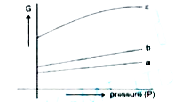Calculate the maximum work done (in multiple of 103) in expanding 16g of oxygen at 300K and occupying a volume of 5dm3 isothermally, until the voume becomes 25dm3 (Give you anwer as nearest integer)Solution in Telugu
The correct Answer is:2
Step by step video, text & image solution for Calculate the maximum work done (in multiple of 10^(3)) in expanding 16g of oxygen at 300K and occupying a volume of 5 dm^(3) isothermally, until the voume becomes 25 dm^(3) (Give you anwer as nearest integer) by Chemistry experts to help you in doubts & scoring excellent marks in Class 12 exams.
Updated on:21/07/2023Topper's Solved these Questions
- CHEMICAL THERMODYNAMICSBOOK - AAKASH SERIESCHAPTER - CHEMICAL THERMODYNAMICSEXERCISE - Practice Sheet- Exercise-II
30 Videos
- CHEMICAL THERMODYNAMICSBOOK - AAKASH SERIESCHAPTER - CHEMICAL THERMODYNAMICSEXERCISE - Practice Sheet- Exercise-III
30 Videos
- CHEMICAL THERMODYNAMICSBOOK - AAKASH SERIESCHAPTER - CHEMICAL THERMODYNAMICSEXERCISE - Lecture Sheet -Exercise-IV
16 Videos
- CHEMICAL KINETICSBOOK - AAKASH SERIESCHAPTER - CHEMICAL KINETICSEXERCISE - Objective Exercise - 4 (Assertion (A) & Reason (R) Type Questions)
44 Videos
- CHEMISTRY IN EVERY DAY LIFEBOOK - AAKASH SERIESCHAPTER - CHEMISTRY IN EVERY DAY LIFEEXERCISE - PRACTICE EXERCISE
29 Videos
Similar Questions
Assertion: Under adiabatic free expansion, (dUdV)T is +ve when attractive forces are dominant between gas molecules [U,V,T respresent internal energy, volume and temperature of gas respectively]
Reason: Internal energy is a state function.
View SolutionThe following curve represents the variation of Gibbs function 'G' with pressure at constant temperature. Correct match of given plots with the physical state of a substance is

View SolutionFor a reaction R1,ΔG=xKJmol−1. For a reaction R2,ΔG=yKJmol−1. Reaction R1 is non-spontaneous but along with R2 it is spontaneous. This means that
View Solution(A) Spontaneous reaction may be slow or fast.
(R ) Spontaneous nature deals with feasibility of the reaction but not rate.
View SolutionAnti allergy drugs are
View SolutionCalculate the maximum work done in expanding 16g of oxygen at 300K occupying volume of 5dm3 and isothermally untill the volume become 25dm3?
View Solution16g of oxygen gas expands isothermally and reversibly at 300 K from 10 dm^(3) to 100 dm^(3) . The work done is ( in J)
View Solution16 g off oxygen gas expands isothermally and reversibly at 300 K from 10 dm^(3) to 100 dm^(3) . The work done is (in J)
View SolutionCertain gas expands from 10dm3 to 35dm3 isothermally by absorbing 413 KJ of heat. What is the work done ?
View SolutionThe maximum work done in expanding 1.6×10−2 oxygen at 300 k and occupying a volume of 10cm3 isothermally until the volume of 10dm3 isothermally unti the volume becomes 50dm2is(R=8.314JK6−1mol−1)
View SolutionThree moles of an ideal gas at 27∘C are compressed reversibly and isothermally from a volume of 10dm3 to 5dm3. Calculate the work done on the gas.
View SolutionAt 400K, 5 moles of an ideal gas expands isothermally and reversibly from 10dm3 to 20dm3. Calculate the work done by the gas.
View Solution0.14kg of nitrogen at 300K is expanded isothermally and reversibly until its volume becomes doubled. Calculate the work done by the gas.
View SolutionThe maximum work done in expanding 16 g oxygen at 300K and occupying a volume of 5 dm3 isothermally until the volume become 25 dm3 is:
View SolutionOne mole of a gas occupying 3 dm^3 expands against constant external pressure of 1 atm to a volume of 13 dm^3. The work done is:
View Solution
